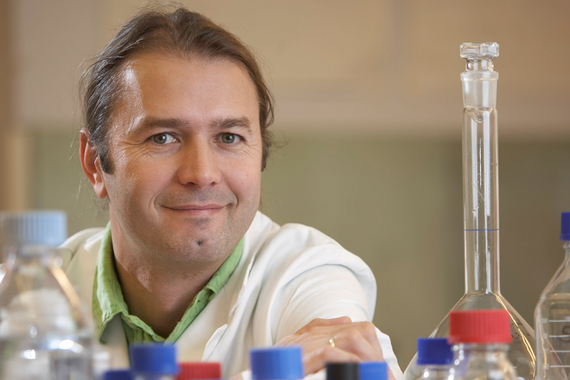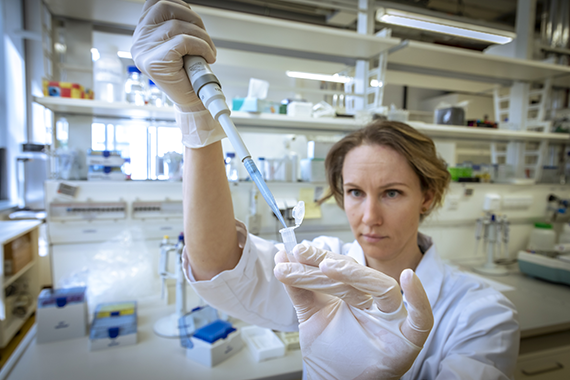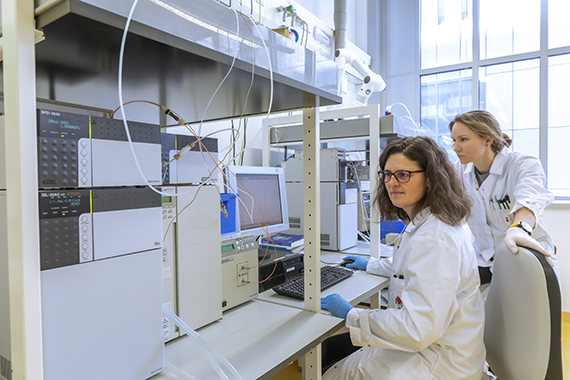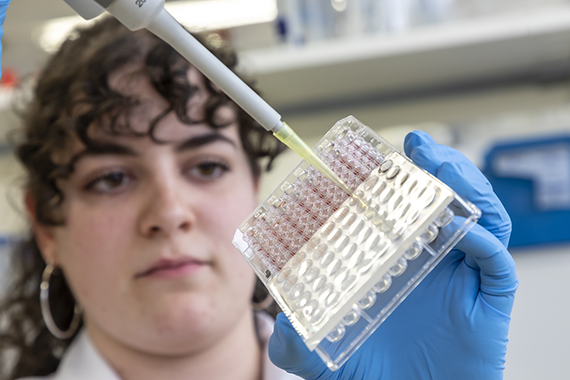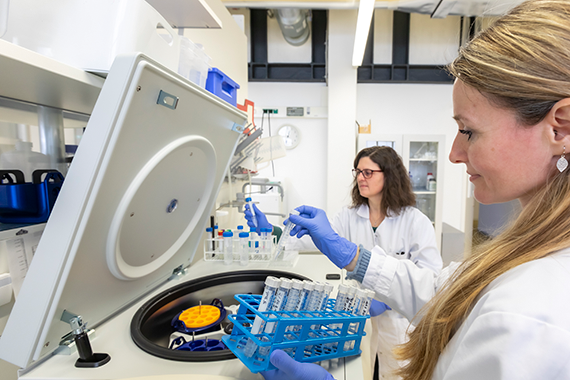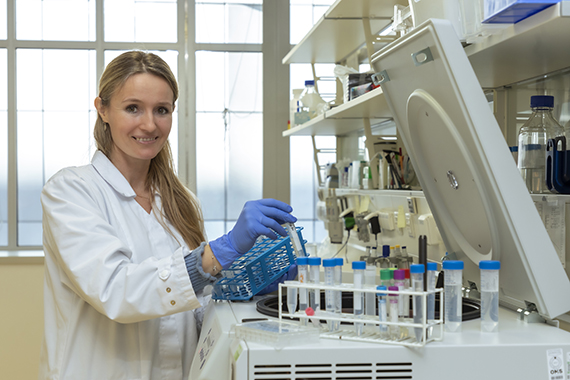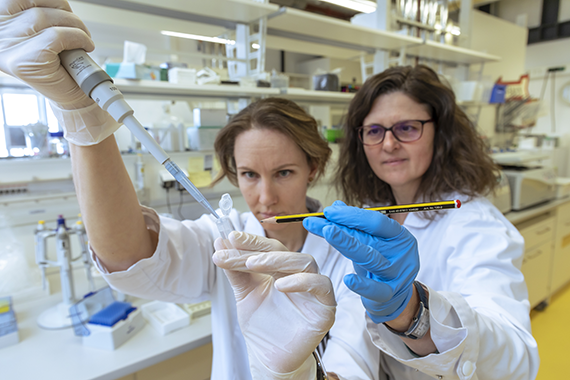- The University
- Studying
-
Research
- Profile
- Infrastructure
- Cooperations
- Services
-
Career
- Med Uni Graz as an Employer
- Educational Opportunities
- Work Environment
- Job openings
-
Health
-
Health Topics
- Health Infrastructure
-
Health Topics
Research team Öttl
Research focus: Metabolism and the gut
PI: Karl Öttl
Focus: Characteristics of albumin in different pathologies in relation to its redox state and bound ligands
Albumin is an important transport protein for endogenous and exogenous compounds in plasma and due to its cysteine-34 it comprises the largest pool of thiol groups in plasma. Physiological and pathophysiological mechanisms like exercise, ageing or diseases (mainly of the liver) affect binding and transport function as well as the thiol content of albumin. In addition the latter serves as a prognostic marker in severe liver disease. We investigate the binding properties of albumin in relation to its structure and molecular flexibility as well as its redox state and the impact of the redox state on cellular mechanisms in view of inflammatory processes.
Network: Our research is embedded in intensive networking with researchers of the Med Uni Graz (Rudolf Stauber, Division of Gastroenterology and Hepatology; Christoph Schwab, Ewald Lindner, Department of Ophthalmology), as well as international colleagues (Aleksandra Klisic, Center for Laboratory Diagnositics, Podgorica; Kerstin Schnurr and Katja Waterstradt, MedInnovation, Berlin; Joan Clària, Hospital Clínic Barcelona; Michal Hammel, Lawrence Berkeley National Laboratory, Berkeley; Kristina Boss, Universitätsklinikum Essen).
Projects
Albumin as redoxmarker: Non-alcoholic fatty liver disease and its potential relationship with Heliobacter pylori infection
- Albumin occurs in different redox states concerning the amino acid cysteine-34. The fraction of the oxidized form is increased during different diseases. Especially in the course of liver diseases like cirrhosis the fraction of highly oxidized albumin is characteristically high. This may serve as a marker for 30- and 90-day survival during acute liver failure. The redox state of albumin in patients with fatty liver and a possible relation to an infection with Heliobacter pylori will be investigated in this project.
- Duration: 2021-2022
- Funded by: Med Uni Graz, BMBWF
- Project partner: Aleksandra Klisic, Center for Laboratory Diagnositics, Podgorica
Binding- and transport properties of albumin
- Binding and transport of insoluble endogenous and exogenous compounds is one of the main functions of the “transport protein” albumin. There are numerous methods for determining and quantifying these properties. Bound ligands and the redox state are two features affecting the transport properties of albumin physiologically or pathophysiologically. Using different ligands and methods the binding properties of albumin mainly from liver patients but also of in vitro modified albumin preparations are investigated.
- Duration: ongoing
- Funded by: Med Uni Graz
- Project partners: Rudolf Stauber, Med Uni Graz, Kerstin Schnurr und Katja Waterstradt, MedInnovation, Berlin
Albumin as redox regulator
- In blood plasma albumin comprises the main pool of free thiol groups by its cysteine-34. However, cysteine-34 may occur in an oxidized form, too. The distribution to different redox fractions depends on age and the presence of diseases. With the background of the varying redox state of albumin during age and diseases and the frequently applied infusion of pharmacological albumin preparations containing high fractions of oxidized albumin, the impact of the redox state of albumin on cellular processes is investigated.
- Duration: 2017-2021
- Funded by: Med Uni Graz, Grifols (Albus Award)
- Project partners: Rudolf Stauber, Med Uni Graz; Joan Claria, Clinic Barcelona
Structure flexibility of albumin in relation to bound ligands
- The transport protein albumin shows an impressive variability concerning binding and transporting ligands. The three dimensional assembly of the molecule serves as the structural basis for its functions. The flexibility of the molecule is essential for its properties. The presence of bound ligands affects the flexibility and therefor the binding and transport properties of albumin. Using structural biological methods the flexibility of albumin is investigated in healthy subjects in comparison to patients with severe liver disease.
- Duration: 2016-2021
- Funded by: Med Uni Graz
- Project partners: Michal Hammel, Lawrence Berkeley National Laboratory, Berkeley; Rudolf Stauber, Med Uni Graz
Albumin redox-state in the eye
- Albumin may have different redox states in different body fluids. Despite occurring in relative low concentrations it is the main protein in aqueous humor and vitreous humor. Oxidative stress is involved in different eye diseases like glaucoma and macula degeneration. Therefor we investigate the role of albumin and its redox state in these pathologies.
- Duration: 2015-2022
- Funded by: Med Uni Graz
- Project partners: Christoph Schwab, Ewald Lindner, Med Uni Graz


